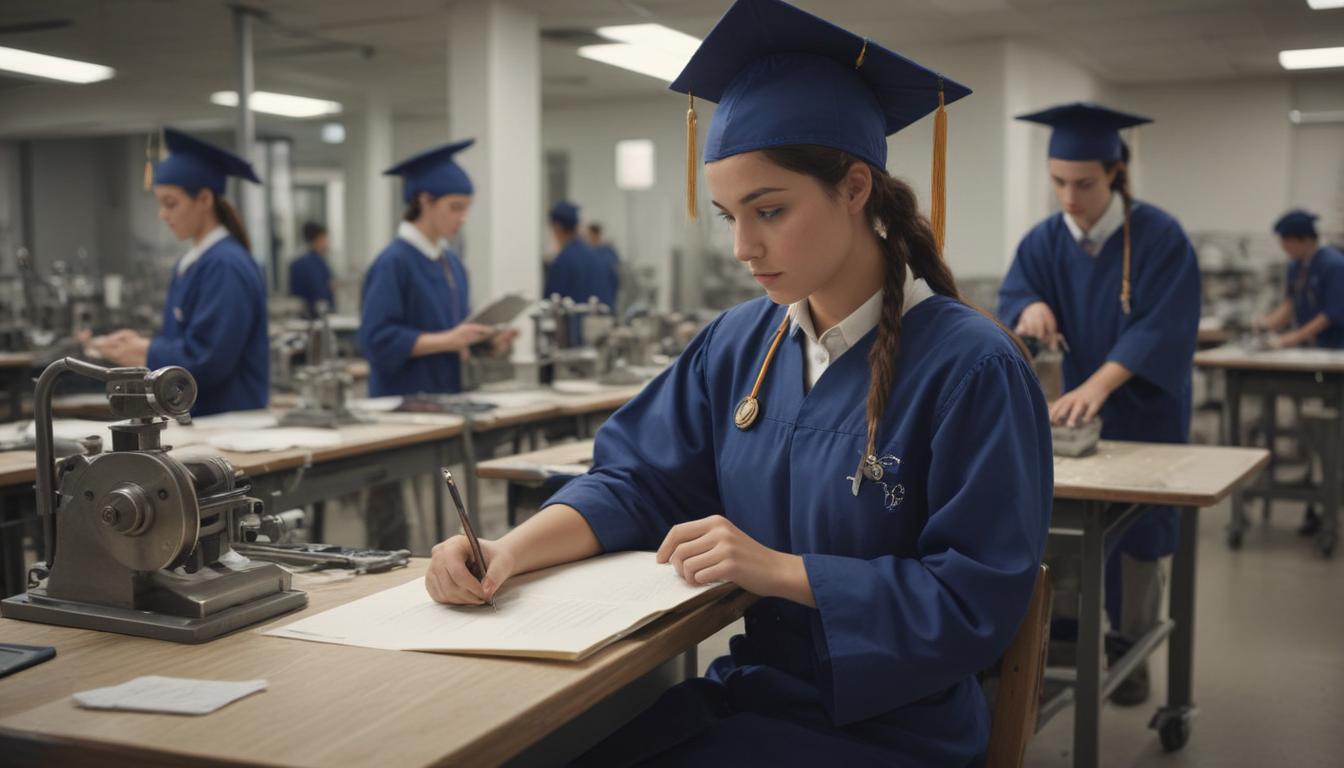Now Reading: Rethinking Skills The Vo-Ed Revolution
- 01
Rethinking Skills The Vo-Ed Revolution
Rethinking Skills The Vo-Ed Revolution

The Future of Vocational Education
Are you looking at the future and feeling a growing sense of uncertainty? You hear constantly about the necessity of a four-year college degree, but you also see the headlines about crushing student loan debt and graduates struggling to find jobs in their field.
It feels like a massive gamble, one that costs tens of thousands of dollars and four years of your life with no guaranteed payout. You want a clear, direct path to a stable, well-paying career without the mountain of debt. The good news is that this path not only exists but is becoming the smarter choice for millions.
The solution is a modern, revitalized approach to vocational education. Forget the outdated stereotypes of dusty, low-tech workshops. Today’s vocational training, also known as Career and Technical Education (CTE), is a gateway to the most in-demand, high-tech, and lucrative sectors of the economy. It’s about gaining specific, marketable skills that employers are desperate for right now. This is your opportunity to skip the debt and uncertainty and fast-track your way to a successful and fulfilling professional life.
Beyond the Workshop A New Era for Skilled Trades
The image of vocational education is undergoing a radical transformation. While foundational trades like welding, plumbing, and electrical work remain critically important and highly paid, the scope of vocational training has exploded. It now includes fields at the cutting edge of technology and healthcare.
Think less about the auto shop of the past and more about the advanced diagnostics lab of the future. Programs in surgical technology, cybersecurity, dental hygiene, and renewable energy technology are now central to the vocational landscape. These are not just jobs; they are careers that require a high degree of skill, precision, and critical thinking.
This evolution is driven by the needs of the modern economy. Businesses today need individuals who can do more than just theorize; they need people who can operate, repair, and innovate with complex systems. An advanced manufacturing technician, for instance, doesn’t just work with metal; they program and maintain sophisticated CNC machines and robotic arms. A wind turbine technician doesn’t just climb a tower; they use advanced diagnostic software to maintain our energy infrastructure. This is where vocational education shines, by providing intensive, hands-on training that is directly aligned with the technology and skills employers need today.
The Economic Advantage Earning More Sooner
One of the most compelling arguments for vocational education is the straightforward financial logic. A traditional four-year degree often involves taking on significant debt. During those four years, the student is also largely out of the full-time workforce, with minimal earning potential. A vocational program, on the other hand, is typically completed in two years or less, at a fraction of the cost of a university degree.
This means graduates enter the workforce sooner, with little to no debt, and begin earning a competitive salary while their peers in four-year programs are still in the classroom.
This early entry into the workforce creates a powerful financial advantage that can compound over a lifetime. The demand for skilled trade professionals is currently outpacing supply, creating what is known as the “skills gap.” This high demand drives up wages significantly. It is no longer uncommon for skilled electricians, plumbers, and specialized welders to earn six-figure incomes. Similarly, healthcare technicians like sonographers and radiologic technologists command impressive salaries due to their specialized skills. Vocational education is not a lesser path; it is a direct and often more profitable one.
How Technology is Shaping Vocational Training
The classroom for vocational education is becoming as innovative as the careers it prepares students for. Cutting-edge learning tools are providing a more immersive and effective educational experience. Virtual Reality (VR) and Augmented Reality (AR) are at the forefront of this change.
Aspiring welders can now practice complex welds in a VR simulation, allowing them to hone their technique in a safe, controlled environment without wasting expensive materials. Surgical tech students can participate in simulated operations, and automotive trainees can use AR overlays to see digital information projected onto a real engine.
This technological integration extends to the curriculum itself, which is increasingly focused on lifelong learning and adaptability. The rapid pace of change means that a single skill set is no longer enough. Modern vocational education is building a foundation of continuous improvement through micro-credentials and specialized certifications. A technician can return for a short course to get certified on new equipment or software, ensuring their skills remain relevant and valuable. This model prepares workers not just for their first job, but for a dynamic career of growth and opportunity.


































